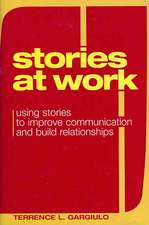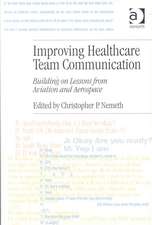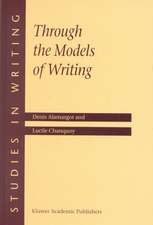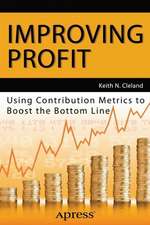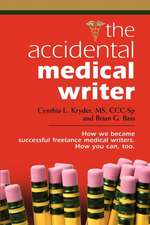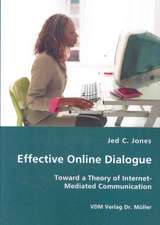Written Documents in the Workplace: Studies in Writing, cartea 21
Editat de D. Alamargot, P. Terrier, J. -M Cellieren Limba Engleză Hardback – 31 ian 2008
*Contributions from linguists, psychologists and ergonomists from various countries ensure international scope and comprehensiveness
*Bridges the gap between fundamental research into writing and reading and the issue of the efficiency of written communication in the workplace
*Enables better content creation for professional writers
Din seria Studies in Writing
- 15%
 Preț: 640.88 lei
Preț: 640.88 lei - 15%
 Preț: 646.94 lei
Preț: 646.94 lei - 15%
 Preț: 639.41 lei
Preț: 639.41 lei - 18%
 Preț: 948.47 lei
Preț: 948.47 lei - 18%
 Preț: 1834.86 lei
Preț: 1834.86 lei -
 Preț: 388.13 lei
Preț: 388.13 lei - 15%
 Preț: 646.30 lei
Preț: 646.30 lei - 15%
 Preț: 637.13 lei
Preț: 637.13 lei - 5%
 Preț: 718.10 lei
Preț: 718.10 lei - 15%
 Preț: 646.11 lei
Preț: 646.11 lei - 18%
 Preț: 691.29 lei
Preț: 691.29 lei - 18%
 Preț: 607.45 lei
Preț: 607.45 lei - 18%
 Preț: 742.06 lei
Preț: 742.06 lei - 18%
 Preț: 573.07 lei
Preț: 573.07 lei - 18%
 Preț: 720.37 lei
Preț: 720.37 lei - 18%
 Preț: 779.04 lei
Preț: 779.04 lei - 18%
 Preț: 576.07 lei
Preț: 576.07 lei - 18%
 Preț: 677.66 lei
Preț: 677.66 lei - 18%
 Preț: 763.64 lei
Preț: 763.64 lei - 18%
 Preț: 616.40 lei
Preț: 616.40 lei - 18%
 Preț: 696.95 lei
Preț: 696.95 lei - 18%
 Preț: 570.93 lei
Preț: 570.93 lei - 18%
 Preț: 548.73 lei
Preț: 548.73 lei - 18%
 Preț: 578.01 lei
Preț: 578.01 lei - 18%
 Preț: 703.54 lei
Preț: 703.54 lei - 18%
 Preț: 522.07 lei
Preț: 522.07 lei
Preț: 618.30 lei
Preț vechi: 837.90 lei
-26% Nou
Puncte Express: 927
Preț estimativ în valută:
118.33€ • 123.08$ • 97.69£
118.33€ • 123.08$ • 97.69£
Carte tipărită la comandă
Livrare economică 07-21 aprilie
Preluare comenzi: 021 569.72.76
Specificații
ISBN-13: 9780080474878
ISBN-10: 008047487X
Pagini: 314
Dimensiuni: 165 x 240 x 19 mm
Greutate: 0.64 kg
Editura: Elsevier
Seria Studies in Writing
ISBN-10: 008047487X
Pagini: 314
Dimensiuni: 165 x 240 x 19 mm
Greutate: 0.64 kg
Editura: Elsevier
Seria Studies in Writing
Public țintă
Writing researchers, educators, linguists, psychologists, psycholinguistsCuprins
Chapter 0.Introduction : written documents in the workplace
Jean-Marie Cellier, Patrice Terrier and Denis Alamargot
Section A. Defining professional documents
Chapter 1.Linguistic markers of semantic and textual relations in technical documents
Anne Condamines and Marie-Paule Péry-Woodley
Chapter 2.The design, understanding and usage of pictograms
Charles Tijus, Javier Barcenilla, Brigitte Cambon de Lavalette and Jean-Guy
Meunier
Chapter 3.Readability and intelligibility of procedural texts: the case of enumeration in
legal texts
Céline Beaudet and Pamela Grant
Section B. Composing documents
Chapter 4.Considering users and the way they use procedural texts: some prerequisites
for the design of appropriate documents
Franck Ganier and Javier Barcenilla
Chapter 5.Highly effective writers and the role of reading: a cognitive approach to
composing in professional contexts
Tom Quinlan and Denis Alamargot
Chapter 6.Professional editing: emphasis on the quality of a text and its communicative
effectiveness
Jocelyne Bisaillon
Chapter 7.Procedural texts written by children
Edouardo Marti and Merce Garcia-Mila
Chapter 8.Developing an online writing tutor to improve technical writing skills in
engineering and science students
John R. Hayes, Diana M. Bajzek, Judy Brooks, Brenda Reyes, Nicole Hallinen
and Erwin R. Steinberg
Chapter 9.The impact of blogs on professional writing. Speed, reach, engagement, and
the art of the self in Web 2.0
Doreen Starke-Meyerring
Chapter 10.The Production of Work Instructions in an Industrial Workplace: The Impact
of a Functional Writer’s Work Context on the Outcome of His Activity
Véronique Barret, Isabelle Clerc and Sylvie Montreuil
Section C. Understanding documents
Chapter 11.Situation models and their role in comprehension: the need to study their
internal structure
Isabelle Tapiero and José Otero
Chapter 12.The effects of interaction with the device and text structure on the mental
representations derived from the procedure
Patrice Terrier, Virginia Diehl and Julie Lemarié
Chapter 13.Comprehension processes in translation”
Pedro Macizo and Maria Teresa Bajo
Chapter 14.How reading strategies affect the comprehension of texts in hypertext systems
Ignacio Madrid and Jose J. Canas
Chapter 15.Task-guidance systems and procedure context: enabling procedures to enhance
worker performance
Jennifer Ockerman
Chapter 16.Animated documentation: a way of comprehending complex procedural tasks ?
Richard K. Lowe
Chapter 17.The impact of cognitively-based design of expository multimedia
Hari Narayanan
Jean-Marie Cellier, Patrice Terrier and Denis Alamargot
Section A. Defining professional documents
Chapter 1.Linguistic markers of semantic and textual relations in technical documents
Anne Condamines and Marie-Paule Péry-Woodley
Chapter 2.The design, understanding and usage of pictograms
Charles Tijus, Javier Barcenilla, Brigitte Cambon de Lavalette and Jean-Guy
Meunier
Chapter 3.Readability and intelligibility of procedural texts: the case of enumeration in
legal texts
Céline Beaudet and Pamela Grant
Section B. Composing documents
Chapter 4.Considering users and the way they use procedural texts: some prerequisites
for the design of appropriate documents
Franck Ganier and Javier Barcenilla
Chapter 5.Highly effective writers and the role of reading: a cognitive approach to
composing in professional contexts
Tom Quinlan and Denis Alamargot
Chapter 6.Professional editing: emphasis on the quality of a text and its communicative
effectiveness
Jocelyne Bisaillon
Chapter 7.Procedural texts written by children
Edouardo Marti and Merce Garcia-Mila
Chapter 8.Developing an online writing tutor to improve technical writing skills in
engineering and science students
John R. Hayes, Diana M. Bajzek, Judy Brooks, Brenda Reyes, Nicole Hallinen
and Erwin R. Steinberg
Chapter 9.The impact of blogs on professional writing. Speed, reach, engagement, and
the art of the self in Web 2.0
Doreen Starke-Meyerring
Chapter 10.The Production of Work Instructions in an Industrial Workplace: The Impact
of a Functional Writer’s Work Context on the Outcome of His Activity
Véronique Barret, Isabelle Clerc and Sylvie Montreuil
Section C. Understanding documents
Chapter 11.Situation models and their role in comprehension: the need to study their
internal structure
Isabelle Tapiero and José Otero
Chapter 12.The effects of interaction with the device and text structure on the mental
representations derived from the procedure
Patrice Terrier, Virginia Diehl and Julie Lemarié
Chapter 13.Comprehension processes in translation”
Pedro Macizo and Maria Teresa Bajo
Chapter 14.How reading strategies affect the comprehension of texts in hypertext systems
Ignacio Madrid and Jose J. Canas
Chapter 15.Task-guidance systems and procedure context: enabling procedures to enhance
worker performance
Jennifer Ockerman
Chapter 16.Animated documentation: a way of comprehending complex procedural tasks ?
Richard K. Lowe
Chapter 17.The impact of cognitively-based design of expository multimedia
Hari Narayanan


